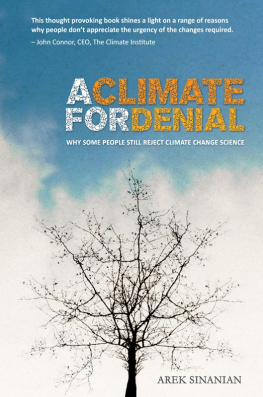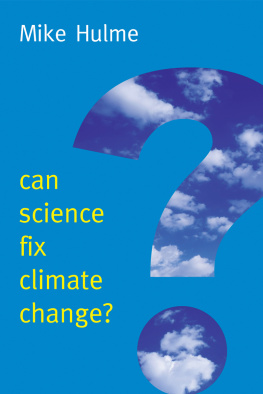About the Authors
SETH B. DARLING received his PhD in physical chemistry from the University of Chicago, after which he was awarded the Glenn Seaborg Distinguished Postdoctoral Fellowship at Argonne National Laboratory in Illinois. He is now a scientist in the Center for Nanoscale Materials at Argonne National Laboratory and a fellow at the Institute for Molecular Engineering at the University of Chicago. His research touches on many aspects of molecular science and engineering, with a particular focus on solar energy, as well as more macro-level concepts related to energy. His recent studies have spanned materials science, chemistry, physics, electrical engineering, environmental science, and economics. As a solar-energy researcher, he has extensive connections outside the traditional research community, including policy makers, journalists, commercial manufacturers, financial experts, andmost important of allthe general public. In recognition of his public outreach work, he received the University of Chicago Pinnacle of Education Award in 2014.
DOUGLAS L. SISTERSON is a senior manager at Argonne National Laboratory for the US Department of Energys (DOE) Atmospheric Radiation Measurement (ARM) Climate Research Facility. The ARM program is the largest federally sponsored climate-change research program in the DOE, and the ARM facility provides the worlds most comprehensive 24/7 observational capabilities for obtaining atmospheric data specifically for climate-change research. He received the University of Chicago Distinguished Service Award for this work in 2010. Before turning to climate change, his experimental work covered fundamental boundary-layer meteorology and micrometeorology, wet and dry removal processes, and pollutant transport. He has also worked on wind energy and on the physical and chemical processes that lead to acid precipitation. He often lectures on a range of weather and climate topics in educational environments, from middle-school classrooms to scientific forums to TED talks. For his educational outreach efforts, he received the University of Chicago Pinnacle of Education Award in 2012.
Acknowledgments
CLIMATE SCIENCE IS a broad, deep, and continually evolving field of research, and the skeptic myths surrounding it are themselves fantastically diverse and incessantly changing. A book of this nature would never have been possible without the generous input and feedback from a collection of friends and colleagues to make sure that the climate science was up to date, accurate, and digestible enough for the general public. Climate data, climate-change phenomena, and impacts of a changing climate are all complex in their own ways and quite a challenge to convey. Sarah Sisterson, our talented illustrator, played a pivotal role in achieving this goal with her stylish depictions of everything from ice-core data to economics.
Researching and writing this book on nights and weekends would never have been possible without the support and patience of our families. We dedicated this book to our children, Isaac Darling and Nathaniel, Sarah, and Rachel Sisterson, whose generation will inherit the climate challenge. Our agent, Peter Tallack at The Science Factory, took on this manuscript when most of his peers were scared off by the prospect of a climate-change book, and he was instrumental in distilling what made it unique. We were also fortunate to have Nicholas Cizek as our editor at The Experiment; he tolerated our penchant for rigor and nuance at each step in the process.
Importantly, we would also like to thank the myriad scientists who toil thanklessly every day to better understand our climate and our impact upon it. It is only through their relentless efforts that this issue has gained the public attention it so desperately needs.
Index
acid rain,
adaptation,
aerosols,
and consensus,
and cooling,
and temperature,
agriculture,
advent of,
air pollution,
See also aerosols; CFCs; sulfur dioxide
air pressure,
allergies,
alternative energy,
amount available,
cost of,
current supply of,
limits of,
variability of,
See also hydropower; solar energy
lvarez, Gabriel Calzada,
American Clean Energy and Security Act,
ngstrm, Anders Jonas,
ngstrm, Knut,
Antarctic ice,
Arctic Oceans Northwest Passage,
Arctic Oscillation,
Arctic sea ice,
Argo buoys,
Arrhenius, Svante,
atmosphere,
carbon concentration in (ppm),
composition of,
layers of,
and oceans,
and radiation,
vastness of,
See also aerosols; CFCs
Bentsen, Lloyd,
Berner, Robert, n.
biodiversity,
biomass energy,
black carbon,
Black Plague,
Bohr, Niels,
business as usual,
Callendar, Guy Stewart,
cap-and-trade,
carbon-14,
carbon
black,
social cost of,
carbon capture,
carbon cycle,
carbon dioxide,
absorption of,
atmospheric concentration of (ppm),
and climate change,
emissions in tons,
and fossil fuels,
and Ice Age,
infrared absorption by,
limiting emissions of,
molecular vibration of,
natural levels of,
and plant growth,
as pollutant,
and temperature,
and volcanic activity,
See also oceans
carbon tax,
carbonic acid,
See also oceans
certainty,
CFCs (chlorofluorocarbons), n.
and temperature,
chaos theory,
Chernobyl,
Clausius, Rudolph,
Clean Air Act,
Clean Water Act,
climate
definition of,
history of,
and weather,
See also temperature
Climate Central,
climate change,
acceleration of,
and carbon dioxide,
definition of,
and fossil fuels,
and global warming,
indicators of,
positive effects of,
short-term vs. long-term,
World Bank on,
See also forcings; global warming; temperature
Climate Change: A Summary of the Science (Royal Society),
climate data,
ice cores,
climate disruption,
categories of major impacts,
and fossil fuels,
Climate History and the Modern World (Lamb),
climate models,
climate normals,
Climate Research Unit (CRU),
climate science,
Climate Security Act,
climate sensitivity,
Climategate,
Mikes Nature trick,
clouds,
and cosmic rays,
commons, tragedy of,
consensus,
and aerosols,
and certainty,
Oregon Petition,
organizations in support of,
and public,
Royal Society report,
The Consensus Project,
conspiracies,
Climategate,
Glaciergate,
medieval warm period,
cooling,
and aerosols,
and ozone hole,
and sun,
and volcanic activity,
coral,
cosmic rays,
See also infrared radiation; solar activity
Dalton, John,
Dansgaard-Oeschger events,
Dansgaard, Willi,
The Day After Tomorrow (film),
desertification,
development,
disease,
health,
divergence problem,
Doppler broadening,
Doran, Peter,
downpours. See precipitation
droughts,
Earth
with five degree temperature change,
orbit of,
without atmosphere,
economics,
business as usual,
and climate models,
El Nio,
employment,
energy,
cost of,
hidden cost of,
limits of,
sources of,
subsidies for,
use of,
watts and terawatts (TW) explained,
See also alternative energy; fossil fuels; hydropower; nuclear energy; solar energy
environmental movement,
Next page









